Related Research Articles

SOS is a Morse code distress signal, used internationally, originally established for maritime use. In formal notation SOS is written with an overscore line, to indicate that the Morse code equivalents for the individual letters of "SOS" are transmitted as an unbroken sequence of three dots / three dashes / three dots, with no spaces between the letters. In International Morse Code three dots form the letter "S" and three dashes make the letter "O", so "S O S" became a common way to remember the order of the dots and dashes. IWB, VZE, 3B, and V7 form equivalent sequences, but traditionally SOS is the easiest to remember.)
CQD is one of the first distress signals adopted for radio use. On 7 January 1904 the Marconi International Marine Communication Company issued "Circular 57", which specified that, for the company's installations, beginning 1 February 1904 "the call to be given by ships in distress or in any way requiring assistance shall be 'C Q D' ".
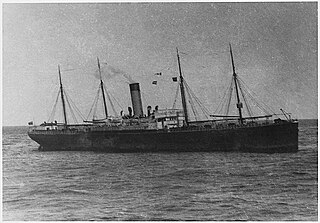
SS Californian was a British Leyland Line steamship. She is thought to have been the only ship to see the Titanic, or at least her rockets, during the sinking, but despite being the closest ship in the area, the crew took no action to assist. The United States Senate inquiry and British Wreck Commissioner's inquiry into the sinking both concluded that the Californian could have saved many or all of the lives that were lost, had a prompt response been mounted to the Titanic's distress rockets. The U.S. Senate inquiry was particularly critical of the vessel's captain, Stanley Lord, calling his inaction during the disaster "reprehensible".

Cape Race is a point of land located at the southeastern tip of the Avalon Peninsula on the island of Newfoundland, in Newfoundland and Labrador, Canada. Its name is thought to come from the original Portuguese name for this cape, "Raso", meaning flat or low-lying. The Cape appeared on early sixteenth century maps as Cabo Raso and its name may derive from a cape of the same name at the mouth of the Tagus River in Portugal. The cape was the location of the Cape Race LORAN-C transmitter until the system was decommissioned in 2010. It is also home to the Cape Race Lighthouse, notable for having received the distress call from the RMS Titanic.
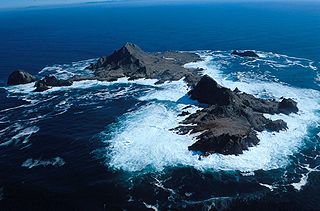
The Farallon Islands, or Farallones, are a group of islands and sea stacks in the Gulf of the Farallones, off the coast of San Francisco, California, United States. The islands are also sometimes referred to by mariners as the Devil's Teeth Islands, in reference to the many treacherous underwater shoals in their vicinity. The islands lie 30 miles (48 km) outside the Golden Gate and 20 miles (32 km) south of Point Reyes, and are visible from the mainland on clear days. The islands are part of the City and County of San Francisco. The only inhabited portion of the islands is on Southeast Farallon Island (SEFI), where researchers from Point Blue Conservation Science and the U.S. Fish and Wildlife Service stay. The islands are closed to the public.

The American Economic Association (AEA) is a learned society in the field of economics. It publishes several peer-reviewed journals. There are some 23,000 members.

SS Princess Sophia was a steel-built passenger liner in the coastal service fleet of the Canadian Pacific Railway (CPR). Along with SS Princess Adelaide, SS Princess Alice, and SS Princess Mary, Princess Sophia was one of four similar ships built for CPR during 1910-1911.

The Kyarra was a 6,953-ton steel cargo and passenger luxury liner, built in Scotland in 1903 for the Australian United Steam Navigation Company.

SS Florizel, a passenger liner, was the flagship of the Bowring Brothers' Red Cross Line of steamships and one of the first ships in the world specifically designed to navigate icy waters. During her last voyage, from St. John's to Halifax and on to New York City, she sank after striking a reef at Horn Head Point, near Cappahayden, Newfoundland, with the loss of 94 including Betty Munn, a three-year-old girl, in whose memory a statue of Peter Pan was erected at Bowring Park in St. John's.
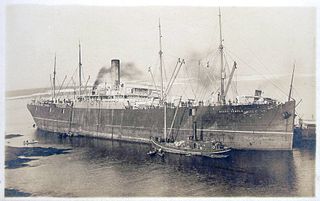
Mount Temple was a passenger cargo steamship built in 1901 by Armstrong Whitworth & Company of Newcastle for Elder, Dempster & Co Ltd of Liverpool to operate as part of its Beaver Line. The ship was shortly afterwards acquired by the Canadian Pacific Railway. It was one of the first vessels to respond to the distress signals of RMS Titanic in 1912.
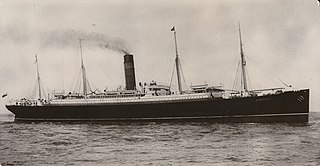
RMS Carpathia was a Cunard Line transatlantic passenger steamship built by Swan Hunter & Wigham Richardson in their shipyard in Wallsend, England.

KPH is a coast radio station on the Pacific Coast of the United States. For most of the 20th century, it provided ship to shore communications including telegrams and marine telex service. The station discontinued commercial operation in 1998, but is operated occasionally as a historic service – its signal can be received over a large portion of the western hemisphere.

This is a timeline of the world's largest passenger ships based upon internal volume, initially measured by gross register tonnage and later by gross tonnage. This timeline reflects the largest extant passenger ship in the world at any given time. If a given ship was superseded by another, scrapped, or lost at sea, it is then succeeded. Some records for tonnage outlived the ships that set them - notably the SS Great Eastern, and RMS Queen Elizabeth. The term "largest passenger ship" has gradually fallen out of use since the mid-1990s. Since that time the title of "largest cruise ship" has largely been given to those confined to cruising rather than transatlantic ocean travel.
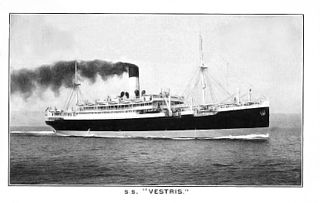
SS Britannia was a UK steam ocean liner that was built in Scotland in 1925–26 and operated by Anchor Line. In 1941 a German merchant raider sank Britannia with the loss of 249 lives.
SS El Kahira was a British Passenger/Cargo ship that sank during a storm in the English Channel on 9 July 1922 while she was travelling from London, United Kingdom to Algiers, Algeria while carrying a cargo of 1,310 tons of bagged sugar.
References
- 1 2 3 4 5 6 "TheShipsList-L (Correspondence)". 7 September 2000. Retrieved 3 June 2009.
- 1 2 3 4 5 6 "Merchant Shipbuilding Corp., Chester PA". Archived from the original on 10 May 2012. Retrieved 3 June 2009.
- ↑ "SS David C. Reid (2217911)" . Miramar Ship Index . Retrieved 3 June 2009.
- ↑ "RFA Winterleaf" . Retrieved 3 June 2009.
- ↑ "Veteran Wireless Association 2005 Yearbook" (PDF). April 2005. Archived from the original (PDF) on 28 August 2006. Retrieved 2 January 2008.
- ↑ "Monthly Weather Review, Volume 56, Issue 10 (October 1928)" (PDF). 1928. Retrieved 2 January 2008.